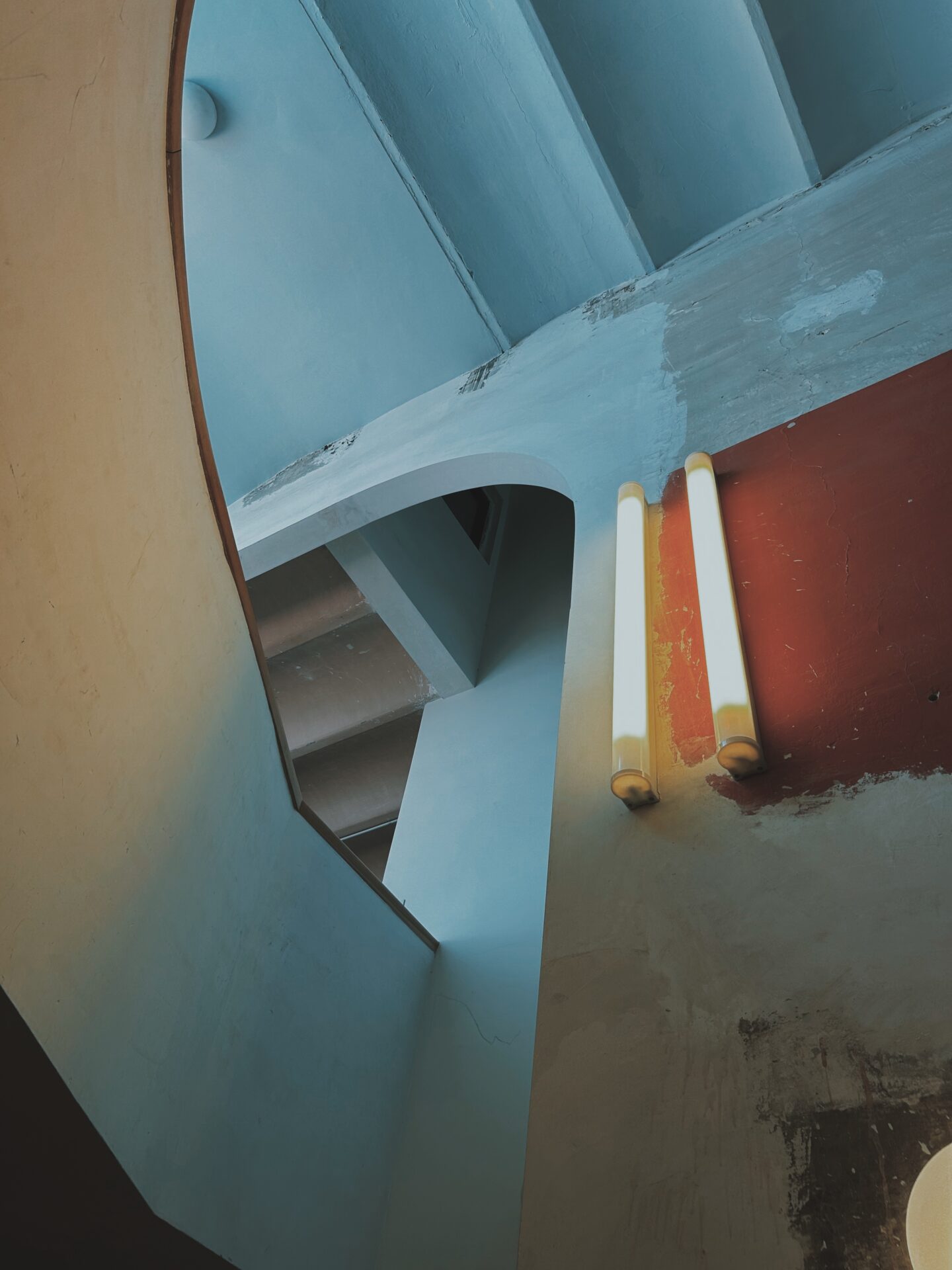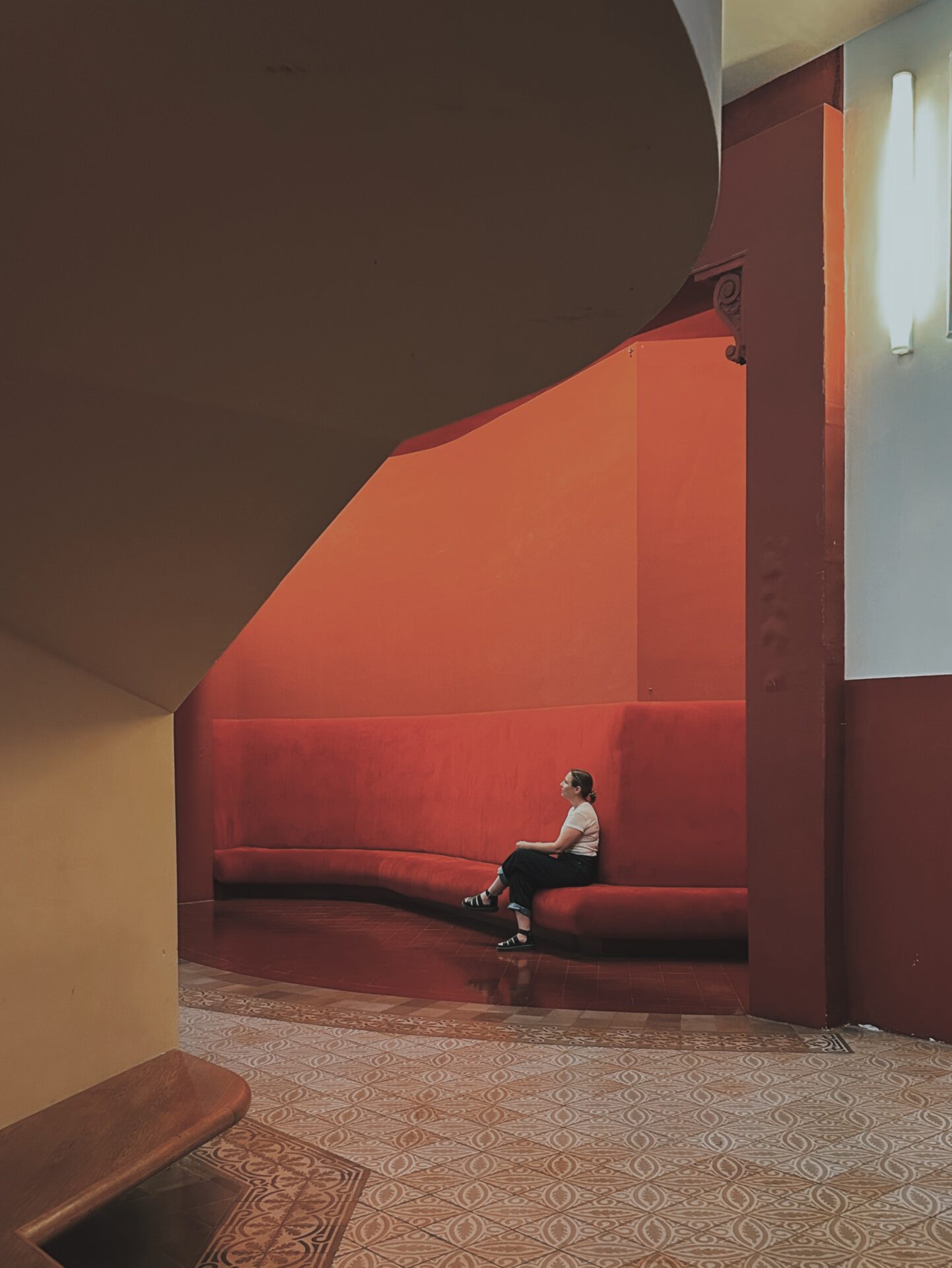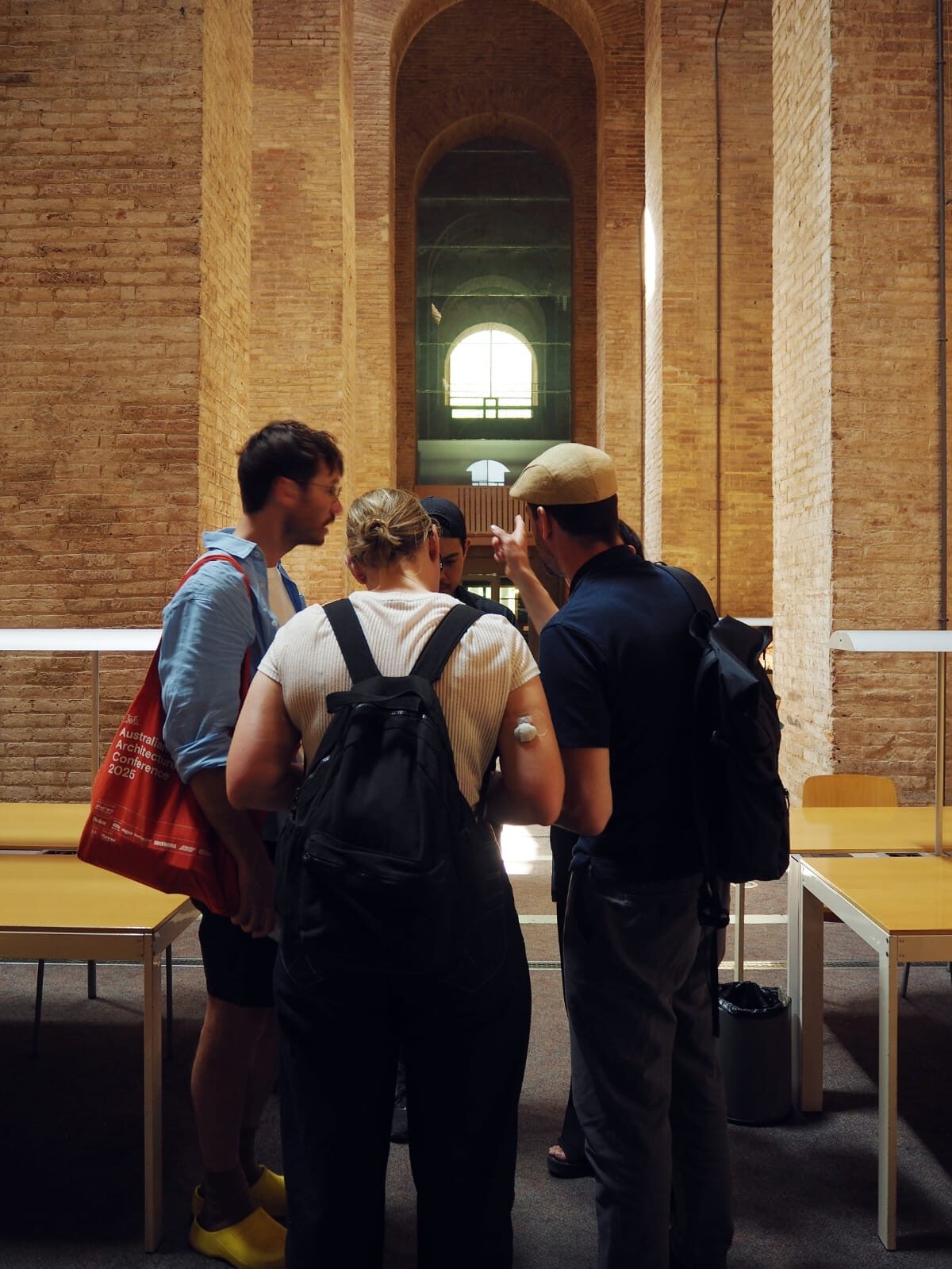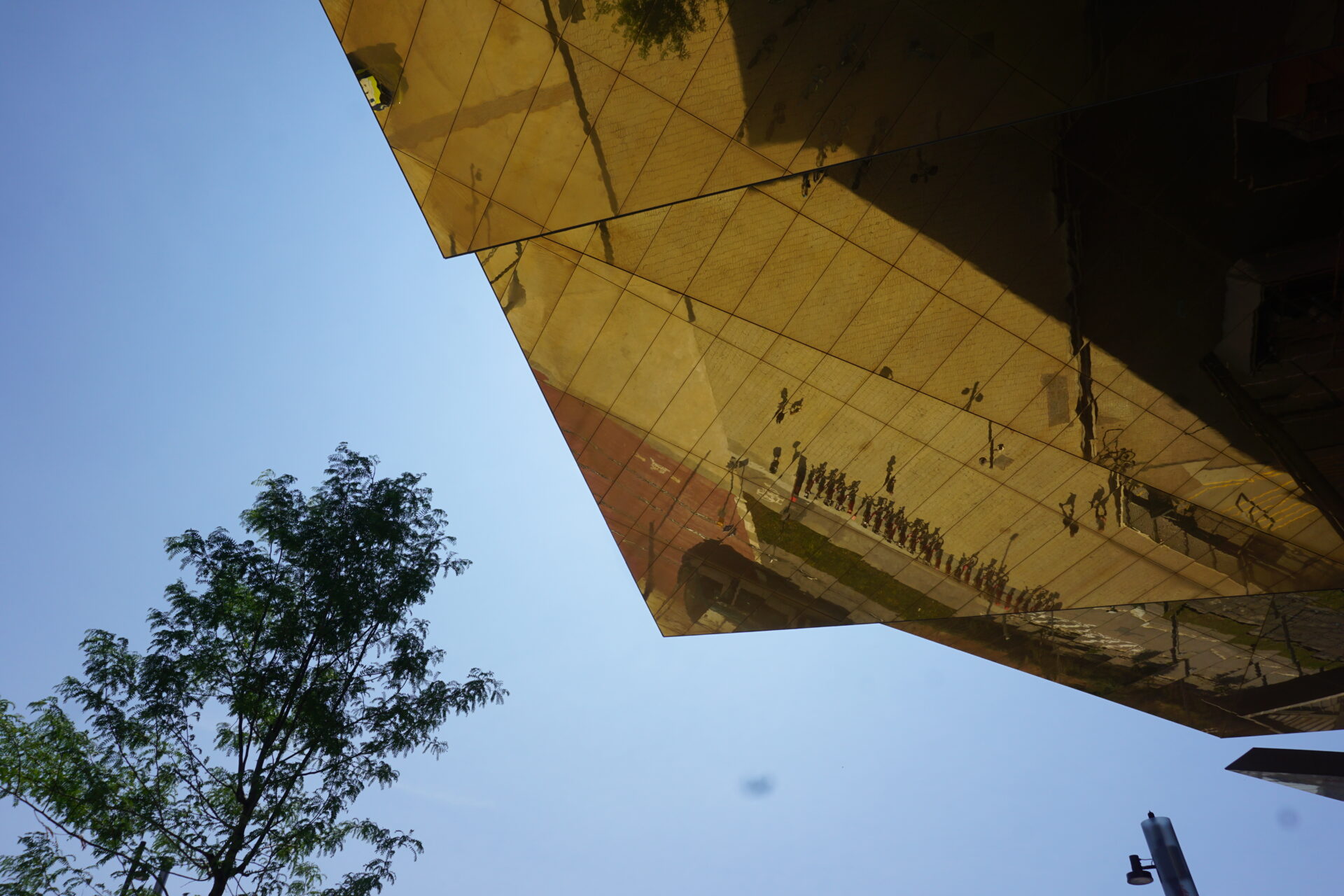

Sponge
We began our day outside the Santa Caterina Market, coffee in hand, when a memory from first-year design studio came flooding back. A tutor had once declared – perhaps a little dramatically – that a single day spent inside an Enric Miralles building could teach you more than five years of architecture school. Obnoxious, maybe, but the comment stuck with me.
It was here that Lorenzo, from Guiding Architects, offered a metaphor that reframed how I see cities: “a city should be like a sponge.” At first, it felt a bit elusive – was he saying a city should absorb whatever its people give it?
But as the day unfolded, the metaphor began to take shape.


Cycling around the market, the contrast to other cities we’d visited was stark. Where Copenhagen was defined by rationalist clarity, Barcelona thrived in complexity. Gothic ornamentation beside unapologetic modern interventions, creating a layered dialogue between past and present. And then, of course, there was Gaudí – inescapable and gloriously untamed.
Lorenzo pointed out that Barcelona’s richness lies in its contradictions. It’s one of the most densely populated cities in the world, yet this density is layered with histories – industrial, political, social – that manifest in its built form. He gestured to historic balusters on the old market building’s parapet, some of which had fallen during renovation and were reinstalled – intentionally upside down – by Miralles and the EMBT team, so their story wouldn’t be forgotten.
He showed us a satellite image: the city grid revealed its “holes” – interior courtyards and chamfered corners, the soft voids that punctuate Cerda’s relentless plan. With thirty-two times the density of Sydney, Barcelona’s complexity isn’t accidental – it’s the result of urban structure being stretched and reinterpreted over time, again and again.

And as the city grows denser, it also seeks to breathe. Roads are pushed underground to create open spaces like the newly completed Parc de les Glòries, a project that was decades in the making. Here, literal holes in the city fabric become places for play, ecology and water. Trees are planted in fenced-off “black holes” to regenerate biodiversity, while engineered landscapes allow rain to drain into the earth – nature made from the technical.
At Sala Beckett, a former workers’ cooperative turned theatre, the City of Barcelona responded to community pressure to preserve the building. Rather than erasing its past, the architects Flores & Prats, celebrated it – curating and relocating existing materials into new roles and spirits, each imbued with memory. It’s a meticulous, poetic layering – an architectural embodiment of post-2008 values, where social and environmental responsibility are no longer optional, but essential.
We continued to Pompeu Fabra University Library, beautifully repurposed from industrial use, and down to the city beaches – once marginal, now beloved. Streets have been reimagined: cars replaced by people, bitumen by trees.
We ended the day at the German Pavilion by Mies van der Rohe and Lilly Reich. It subverts expectations – rejecting monumentality, symmetry and ornament. A modernist gesture amid a richly historical city, the pavilion reminds us that architecture is also political, responsive to its time and place.
So, the sponge metaphor holds. A city absorbs its past, its conflicts, its ambitions. It is porous, contradictory and alive. And its scars are what make it beautiful.
As we soak in the sunlight at the German Pavilion, surrounded by the layered complexity of Barcelona, my thoughts turn to the cities we call home in Australia. We, too, are navigating the weight of population growth, a changing climate and deepening social divides. But what if we could reimagine our urban environments as sponges – not simply absorbing density, but holding onto the traces of what came before? Scars, memories and ecologies – woven into the city’s fabric – could become the foundation for something richer, more generous. Could this be the shift we need? A move toward cities shaped not just by metrics and plans, but by care, memory and the voices of the communities who live there.